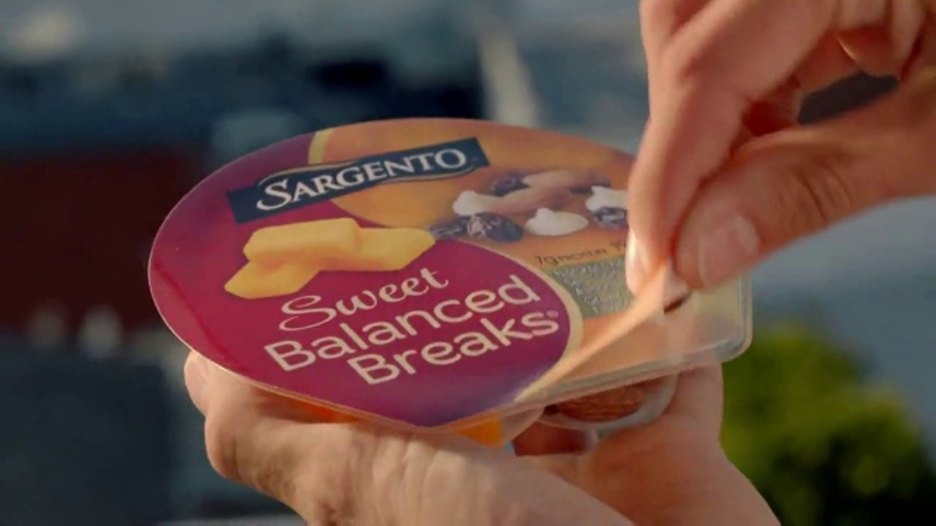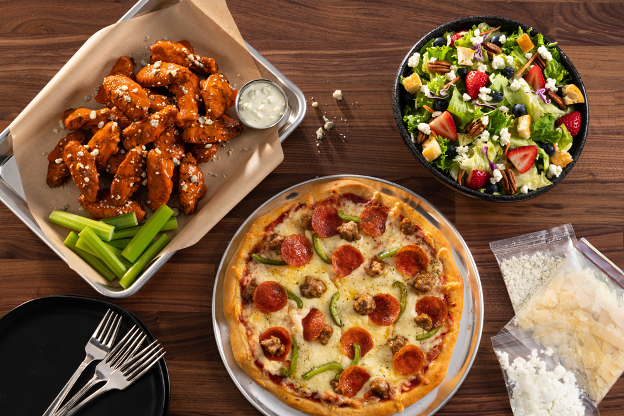Written by Stephen Boehler with special guest Erin Price
Erin Price is the President of Food Service and Ingredients Division at Sargento Food, and the perfect person to answer the highly topical question of what business-to-consumer (B2C) and business-to-business (B2B) marketers can learn from each other. In her current B2B role she leads all business-to-business product sales to top customers across CPG ingredient companies, casual dining, QSR, and fast-casual restaurant chains. Prior to this role, Erin spent 15 years in CPG marketing, holding senior positions in strategic planning, marketing, and integrated marketing communications.

Erin was gracious with her time and wisdom!
You’ve been leading Food Service and Ingredients Division now for about two years; what have you learned? What has surprised you?
Erin: I think B2C marketers and managers are sometimes intimidated by making the move to the B2B world. The structure and business model are admittedly very different, but what I have discovered is the core skill set is very transferrable. Focusing on the fundamentals of marketing, strategy and leveraging the basics of strong general management makes it easier to make the switch.
You had incredible success in B2C marketing at Sargento. What have you been able to apply from that experience to B2B marketing?
Erin: Listening to customer needs is universal. Customers, whether they are individuals or organizational decision-makers, want something that will meet their specific needs. So, going deep and truly understanding your customer is job one, no matter who you are talking to.

You also led strategic planning at Sargento. This was a rare and wonderful opportunity for a marketer – what did you learn from that experience that helped prepare you for your current general management role?
Erin: Being able to work in strategic planning was an incredible gift for me as I transitioned from marketer to general manager. As a marketer, you focus so intently on your areas of responsibility-consumer communication, product development, promotions, agency management, etc. All of that is valuable to the organization, but there’s less transparency to the rest of the business and the P&L. Being able to see the whole picture expanded my horizons and helped me move into a division leadership role.

What have you learned in your B2B role that will make you a better B2C marketer?
Erin: Patience. The B2B buying process is much longer than B2C. When it comes to consumer marketing in the food industry consumer, the feedback is immediate; the product gets on shelf, communications turn on and you know rather quickly whether or not it is working or if you need to make a change. B2B simply does not work like that. It’s really about building trust with your customers and understanding their priorities. So, I’ve had to learn to focus on smaller indicators that show whether a relationship or joint product venture is moving in the right direction.
How do you think about the balance between brand building and performance marketing strategies?
Erin: “The word ‘balance’ is key. Often you see people talk about brand building versus performance marketing which, to me, is incredibly misguided. The two are interdependent and the most successful brands understand that one does not exist without the other. They absolutely feed each other and work together. Having a strong brand drives higher return-on-investment on performance tactics. But performance marketing, done well, also helps to build the brand, even while driving short-term sales. In my view, this relationship cannot be relegated to a ‘magic’ formula or algorithm that dictates how much a company should spend on each for results. Instead, it’s best to look for marketing plans that drive both but have certain tactics that might lean more toward one or the other. The bottom line is consumers don’t look at an advertisement or a coupon and try to distinguish if it’s an incentive or if it’s supposed to elicit an emotional reaction. It’s all just communication to them. So, build an IMC (Integrated Marketing Communication) plan that can reach your goals in totality and allow each piece to contribute to the whole.

What are CMOs and senior marketers looking for in an agency these days?
Erin: For me, the most important thing is a great partnership. Does this agency truly understand my brand and my organization and the unique challenges I am facing? Can they think outside their normal processes and procedures to get my brand the very best thinking? How can the agency demonstrate flexibility to help my team react creatively to rapidly changing consumer dynamics? And, are they willing to invest themselves in my brands and success as an equal partner, with the same goals and metrics that my team must achieve. These are the questions I ask when seeking an agency partner.
How can clients work more effectively with their agencies?
Erin: The number one thing that clients need to work on is their communication. Clients and agencies think very differently because their incentives and motivations come from different places. So, to bridge that gap you have to be in constant communication. Sharing updates on business performance, new research, and insights you’ve learned and made sure the agencies truly feel a part of your team are critical parts of a relationship. Mutual respect and transparency are non-negotiable aspects in any good relationship, and they sound really simple but take real work and effort to ensure they are implemented every day.
What can agencies do to work more effectively with their clients?
Erin: See above! Communication must work both ways. Often times agencies can create or use social media-like tools to help bring the client into ‘their world’ and build stronger partnerships. Extending the collaboration tools to key contacts on the client-side can help keep them invested and connected to the workflow and thought process happening ‘behind the scenes.’

Knowing what you know now, what advice would you give to 30-year-old Erin?
Erin: Honestly, to focus more on the people. Early in my career, I was very task-oriented. It’s common for a junior manager who isn’t yet comfortable with leading to spending too much time thinking about how to deliver the results/project/outcomes of whatever they are tasked to lead. But as I have gotten more comfortable in my career, I realize that it is, and always was, all about the people. How can I help others achieve what they need to? How can I coach and guide instead of directing and delegating? Approaching a team with empathy and focusing on the people first, and then the task is a better way to be a good leader and a better person. (I would also tell 30-year-old Erin that she needs to enjoy the stamina and energy she has. That doesn’t last forever. )
If you were a brand or marketing leader today, what would you focus on?
Erin: The next few years are going to see massive shifts in consumer behavior, on a scale perhaps not seen since the Industrial Revolution. So much of our world is changing and doing so very fast. I hope today’s brand leaders are watching and recognizing the significance of the times we are living in. It can be stressful and uncertain, but it’s also extraordinary and someday we won’t be able to believe how things ‘used to be’.

Erin Price is the President of the Food Service and Ingredients Division for Sargento Foods Inc. In this role, she manages all business-to-business product sales to top customers across casual dining, QSR, and fast-casual restaurant chains as well as top CPG food companies. During her 14 years at Sargento, Price has held numerous leadership roles across strategic planning, marketing, and integrated marketing communications. She refined the company’s strategic planning process, launched a company-wide e-commerce strategy, and stood up the company’s first integrated marketing communications department. While in marketing, her teams accelerated the Sargento brand’s growth to become a national market-share leader in the retail cheese category. They also launched integrated marketing campaigns that made Sargento one of the most recognized brands in the dairy case. Prior to Sargento, Price worked in brand management at some of the world’s top CPG companies. She serves on several associations committed to supporting female leadership through professional development programs and donates her time and talent to help create strategic plans and brand identities for non-profit organizations, including the United Way and local food banks.
Steve Boehler, founder, and partner at Mercer Island Group has led consulting teams on behalf of clients as diverse as Zillow Group, Microsoft, UScellular, Nintendo, Ulta Beauty, Stop & Shop, Qualcomm, Brooks Running, and numerous others. He founded MIG after serving as a division president in a Fortune 100 when he was only 32. Earlier in his career, Steve Boehler cut his teeth with a decade in Brand Management at Procter & Gamble, leading brands like Tide, Pringles, and Jif.